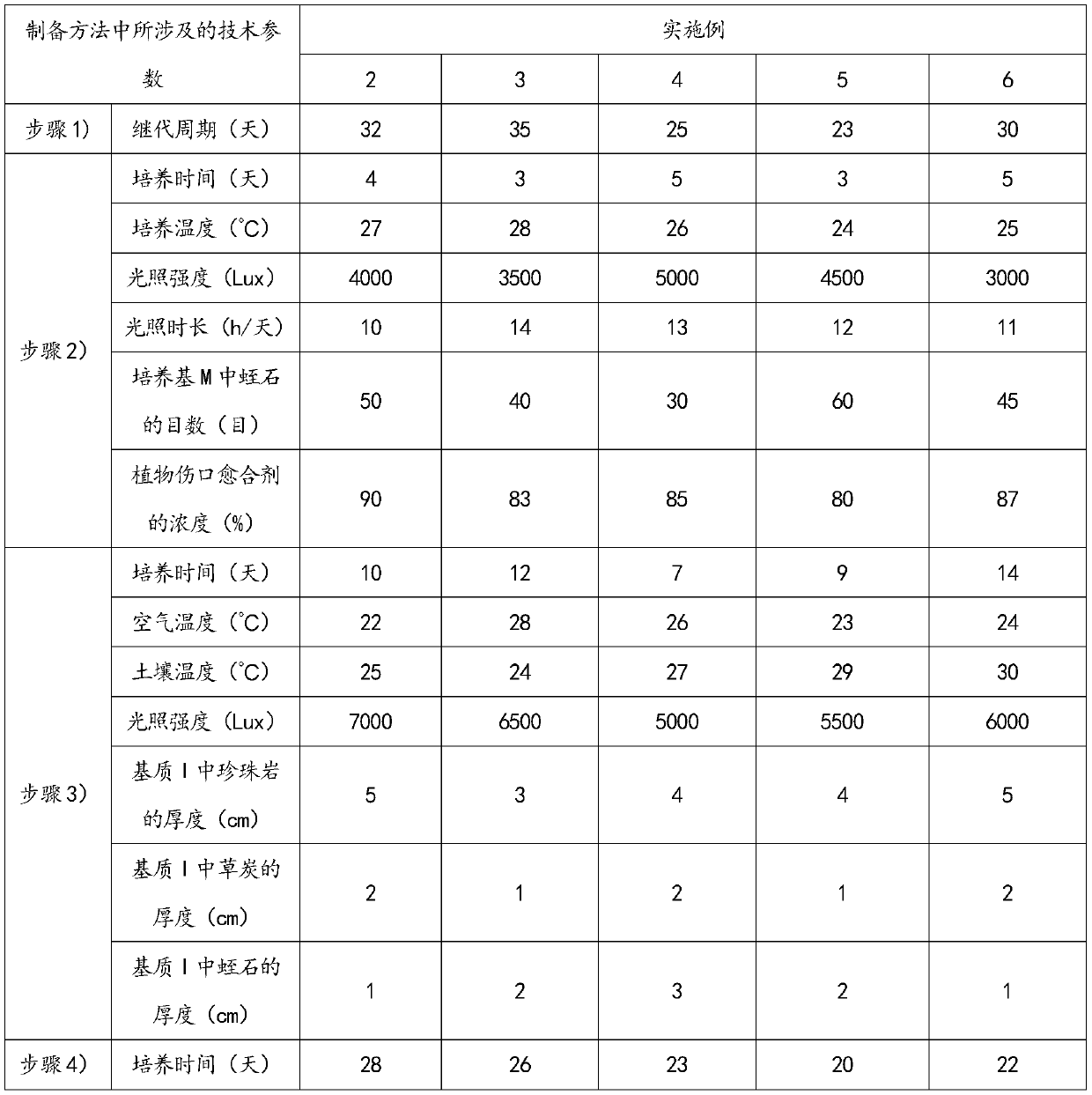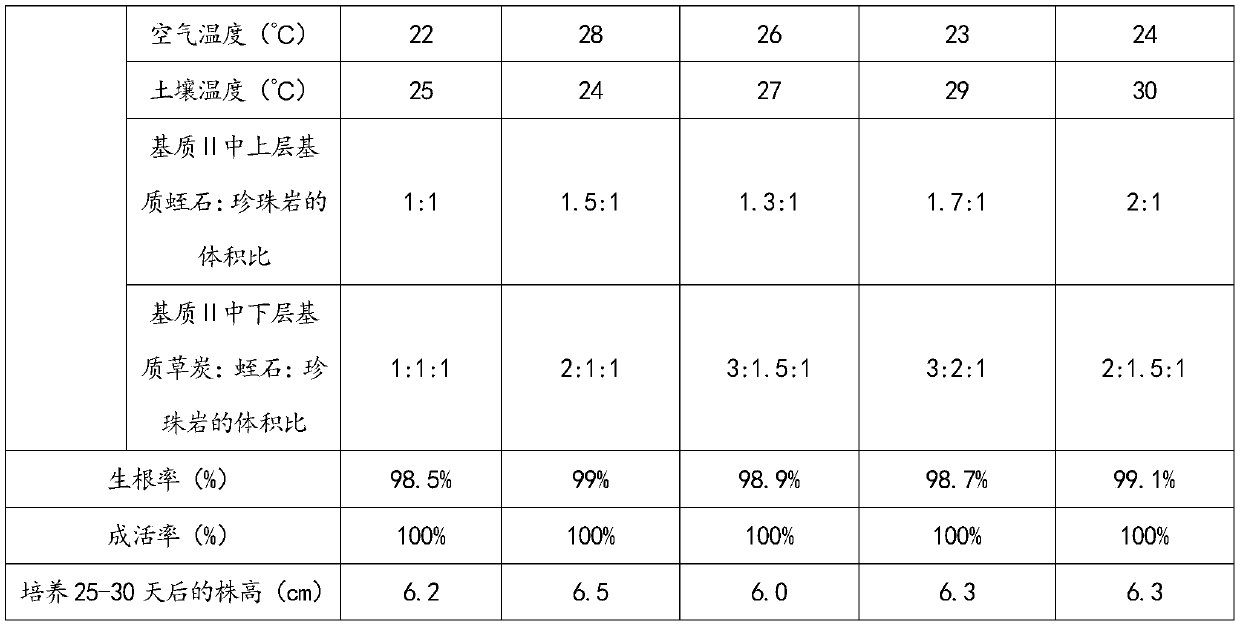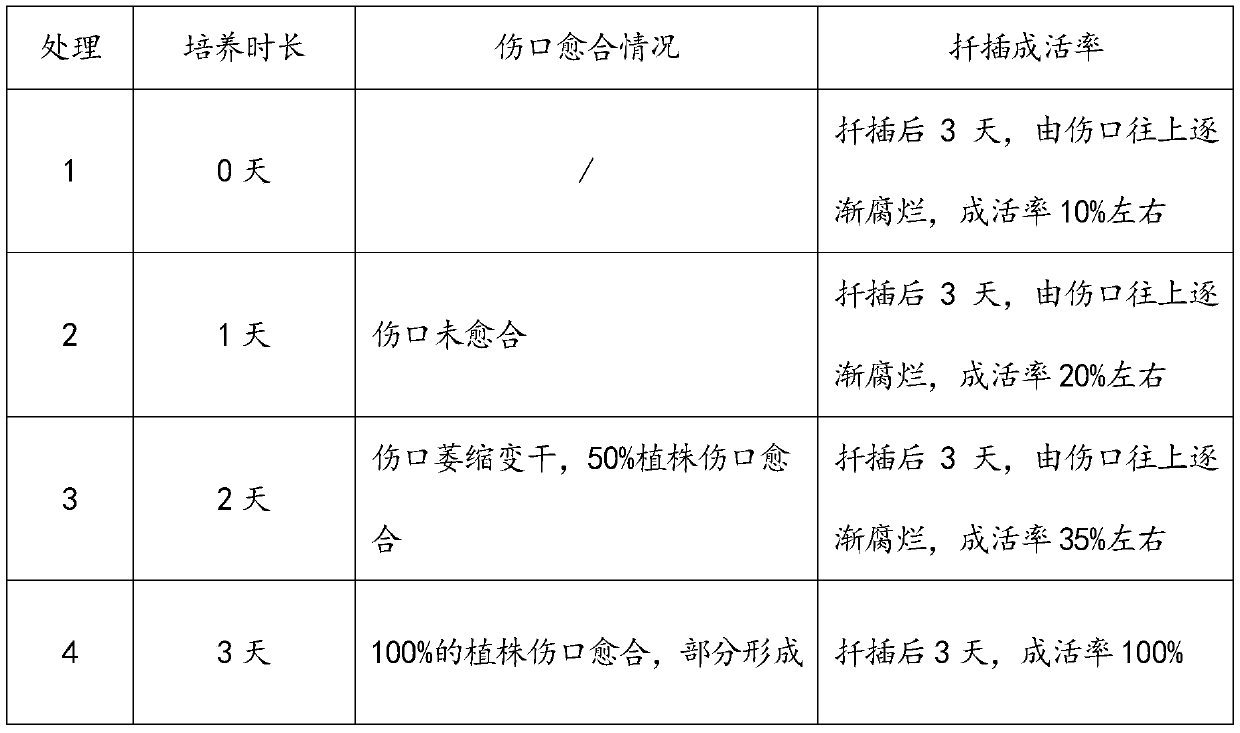Ex-vitro rooting method for tissue culture seedlings of catalpa bungei
A technology of tissue culture seedlings and external rooting, applied in the field of plant cultivation, can solve the problems of unstable survival rate, separation of offspring traits, self-fertilization, etc., achieve shortening rooting cultivation time, high rooting survival rate, and promote new leaf extraction raw effect
- Summary
- Abstract
- Description
- Claims
- Application Information
AI Technical Summary
Problems solved by technology
Method used
Image
Examples
Embodiment 1
[0026] A method for rooting out of a bottle of catalpa tissue culture seedlings, comprising the following steps:
[0027] 1) Selection of rooting material: select catalpa tree tissue culture seedlings with a plant height of 2-4cm, a subculture period of 30 days, and dark green leaves, remove the base leaves and axillary buds, and leave 3-5 fully expanded leaves on the top, Obtain rooting material A;
[0028] 2) Wound healing of rooting material: Coat the incision of rooting material A with plant wound healing agent, then insert it into medium M and cultivate it for 3 days. The culture conditions are: culture temperature 25°C, light intensity 3000Lux, light duration 12h / day , to obtain rooting material B; wherein, the medium M is: 60 mesh vermiculite and deionized water are sterilized at 121 ° C for 10 minutes, and the volume ratio of 60 mesh vermiculite: deionized water is = 1:1 . The plant wound healing agent is a mixture of a bactericide and an auxiliary agent, and the con...
Embodiment 2-6
[0033] Embodiment 2-6 is respectively a kind of flat external rooting method of catalpa tree tissue culture seedling, and its step is similar to embodiment 1, and difference only is that the technical parameter involved wherein is different, specifically see the following table for details:
[0034]
[0035]
[0036] The catalpa rooted seedling that makes by above-mentioned embodiment 2-6 method can grow root under room temperature natural environment, there is a large amount of fibrous roots on main root, and root system vigor is strong, and after 3-5 days new root sends out, directly absorbs the nutrition in the matrix and promotes new growth. The leaves are pumped, and the rooting survival rate is high, which can reach more than 98%. The leaf color is dark green, and the plant height is more than 6cm in 25-30 days.
PUM
| Property | Measurement | Unit |
|---|---|---|
| Height | aaaaa | aaaaa |
| Thickness | aaaaa | aaaaa |
Abstract
Description
Claims
Application Information
 Login to View More
Login to View More - R&D
- Intellectual Property
- Life Sciences
- Materials
- Tech Scout
- Unparalleled Data Quality
- Higher Quality Content
- 60% Fewer Hallucinations
Browse by: Latest US Patents, China's latest patents, Technical Efficacy Thesaurus, Application Domain, Technology Topic, Popular Technical Reports.
© 2025 PatSnap. All rights reserved.Legal|Privacy policy|Modern Slavery Act Transparency Statement|Sitemap|About US| Contact US: help@patsnap.com



